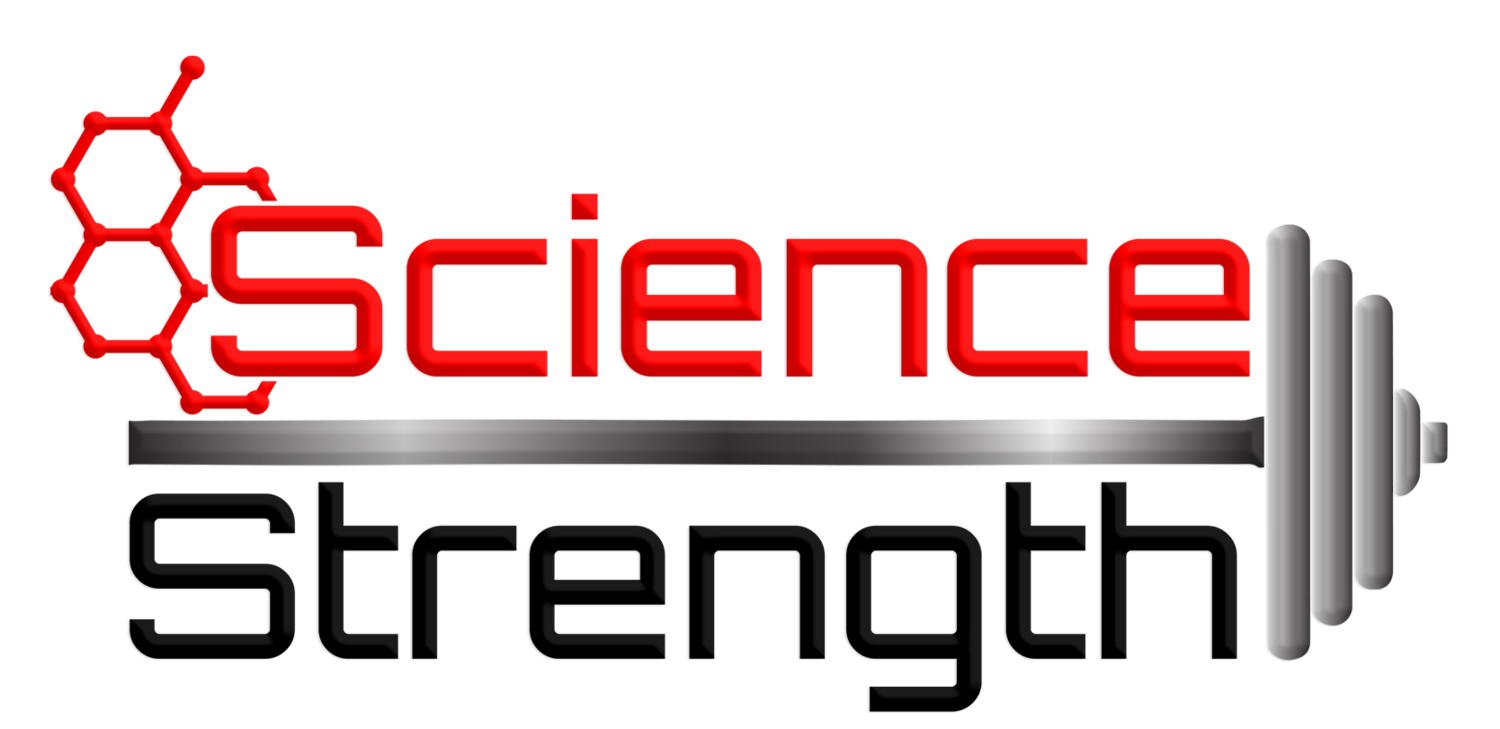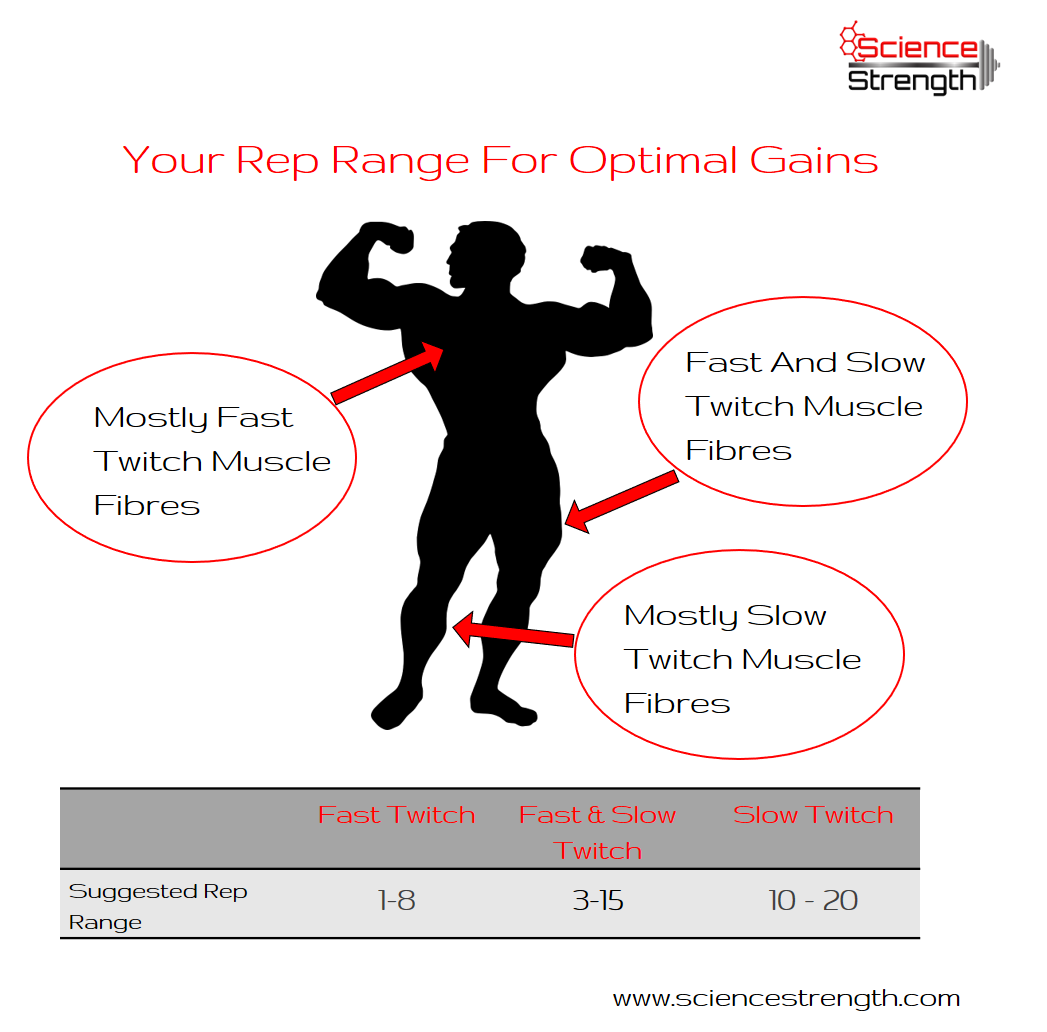Have you ever asked yourself one of the following questions?
- Am I doing sufficient sets?
- Am I using the right weight?
- Am I working in the right rep range?
- Which workout should I use for fat loss?
Finding the right training program for personal goals is challenging. The high abundance on lifting programs on the internet and hundreds of different opinions doesn’t make it any easier.
For this reason, I decided to address these frequently asked questions and make it as easy as possible for you to decide which program is best for you. In this article I will give you useful tips on how many sets and reps you should be doing depending on your training stage, your genetics and your goal.
Let’s start with the rep range
The repetition range you should work in depends on three factors:
- Your goal
- Your muscle fiber composition (that is determined by your genetics and your sports background)
- The muscle group you train
There are two types of muscle fibers in your muscle; slow twitch and fast twitch muscle fibers.
Slow twitch muscle fibers respond to high rep ranges (higher than 8 reps) using lighter weight and fast twitch respond to higher weights and low rep ranges (less than 8 reps) or fast, powerful reps using lighter weight.
- If you are an endurance athlete wanting to enhance your performance, you will need to focus on slow twitch and high rep ranges.
- If you want to improve your strength and power, you will need to focus on fast twitch muscle fibers using low reps with heavy weights or fast movement.
- If you are a bodybuilder whose goal is to increase muscle size (ie, you want to look really BIG), you will need to focus on both, fast and slow twitch muscle fibers, to get the maximum growth in the entire muscle.
However, this is not the end of the story. Now your genetics comes into the game. Muscles aren’t equally divided into 50% slow twitch and 50% fast twitch muscle fibers. The muscle fiber composition doesn’t only vary from muscle group to muscle group (ie, is different for quads than lats) but also is individual-dependent. Every person has a different muscle fiber composition depending on the sports background and the individual genetics. Yes! Your genetics do really play a role, as I’ve written previously in my post “Your Best Training Plan Is In Your Genes”.
The inter-individual differences can be hugely pronounced, especially for quads. Whereas some individuals can have only 5% of their quads consisting of slow-twitch muscle fibers, others can have as much as 90% slow-twitch muscle fibers in their quads and only 10% fast-twitch.
Thus, it is a no-brainer that if a person whose quads consist of 90% slow-twitch muscle fibers trains with very heavy weights in low rep ranges, this type of training will optimally train only 10% of this person’s quads. In fact there was a research study that showed that matching training type to the individual genetics leads to highest improvements, in both endurance ability and power. As power is closely related to strength, it is very likely that the same would apply to power as well.
And yes, you got it right. In contrast to the widely-accepted rule I stated above that one needs to lift heavy weights to gain strength and power, this seems to not apply to individuals with endurance-type genetics (people whose muscle consist mostly out of slow-twitch muscle fibers).
But how do I know what type of genetics I have?
This is how it works:
Take 80% of your 1 repetition maximum (1 RM) for the exercise that targets the muscle group(s) you want to test. Thereby this muscle group should be the limiting factor of your performance (the reason why you can’t do more reps when you miss a lift). Squat and bench press would be good candidates. Deadlifts in contrast not that much, as you always risk getting a lower back fatigue and subsequent injury if you go all out on deadlifts. Mostly, it is the lower back and not the legs that is the limiting factor for deadlifts.
After you warm up, do as many reps as possible (without killing yourself…please ask someone to spot and adjust the safety bars to the right height).
If you do less than 8 reps, then the muscle group you targeted is fast-twitch dominant and it makes sense for you to choose a program with low reps and high intensity.
If you do much more than 8 reps, then a program that implements high reps makes sense for you.
If you do about 8 reps, then your muscle fiber types are mixed and you should try to implement both, high and low reps.
From my experience, most lifters can do between 8 and 13 reps, thus, they have a mixed fiber type and it makes sense for them to train in both rep ranges, high and low rep range. However, I have seen a few exceptions to this rule; male lifters who could squat only 3-5 reps at 80% or on the other side of the spectrum, female athletes who could squat more than 20 reps at 80% 1RM. Obviously, for these lifters most of the squat training should happen in the low rep range using heavy weight or in the higher rep range, respectively.
Nevertheless, even if the lifters who are slow twitch fiber dominant have to train mostly in a high rep range for strength (1RM) gains, it is crucial to include some heavy, low rep sets into the training routine too to get a feeling of heavy weight. Otherwise it is easy to freak out if suddenly you feel much more weight on your shoulders than your are used to. To go one step further, some powerlifters even include exercises like just unracking heavy weight without moving it (e.g. benching or squatting) just to get their bodies used to the heavy load. Then even the personal maximum won’t appear that heavy any more when testing 1RM, which give a lifter a huge psychological benefit.
To cut the long rep-range-you-need-to-train-in short:
Test your muscle fiber composition using the 80% test and work in the rep range(s) that target the majority of your muscle fibers. For most people, except outliers of course, it makes sense to implement sets with 3 to 15 reps into their training routine.
The issue with reps should be clear by now.
But how many sets should I do?
This question will be answered in part 2 of this series, stay tuned…
Don’t want to wait until next post and want to get an optimal program designed for your training stage right now?
Then check out my Training Plan Package.
The package includes whole-body workouts, upper-lower body split workouts and 3-day body-part split workouts with training volume adjusted to different training stages.

